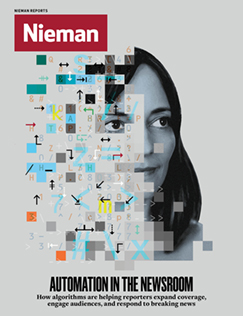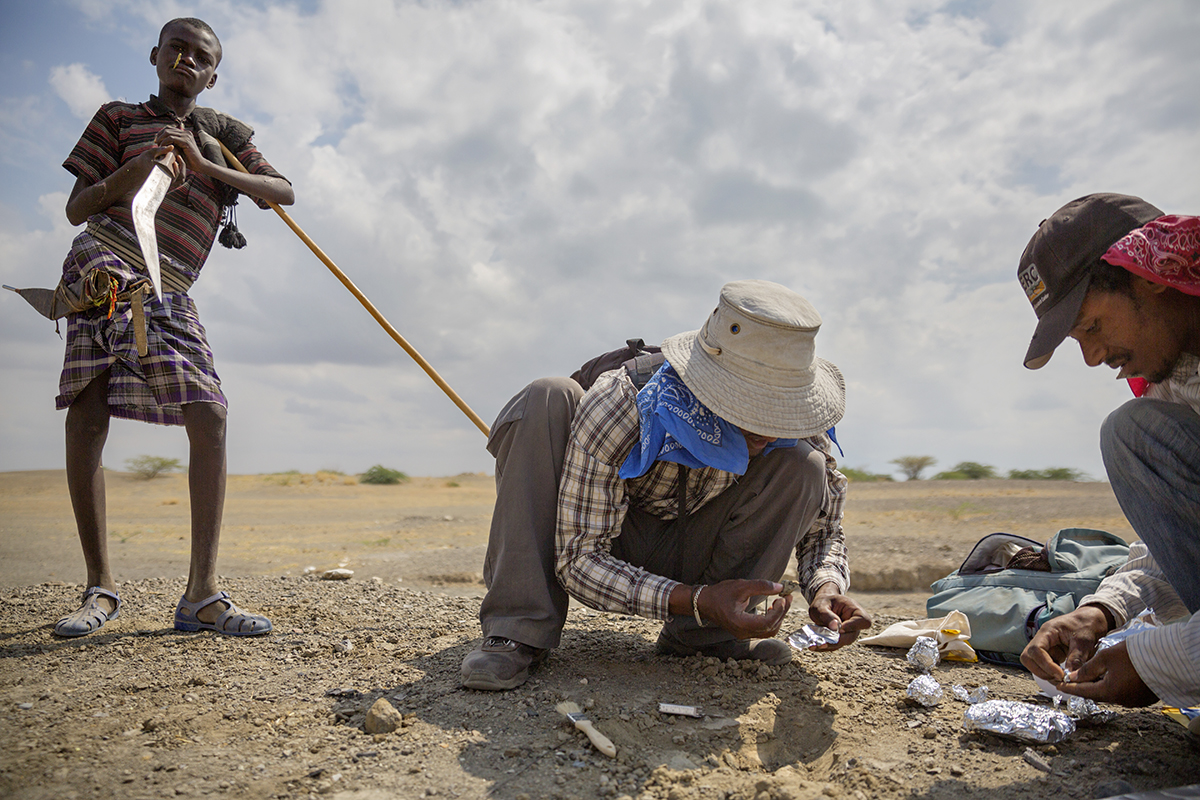
Paleontologists in Ethiopia, where journalist Paul Salopek began a seven-year walk around the world, examine tools and other evidence of humans from 60,000 years ago and earlier
Eventually, he settled down to write a book about his travels, a frustrating exercise for Salopek, who wanted to be out in the field, not writing about being out in the field. “I sat at my desk fantasizing about how to escape, and thinking what would be the most amazing narrative I could pursue,” he recalls. “What is the ultimate quest?” For Salopek, the answer was “the spread of homo sapiens out of Africa.” So he conceived a project tracing that migration, from Ethiopia, across the Middle East and Asia, and down through the Americas to the tip of Argentina.
To follow that path, he would use the same means our long-ago ancestors did: his feet.
Thus was born the Out of Eden Walk, a seven-year quest to walk across the world and report every step of the way. Now two years into the project, Salopek has gotten as far as Tbilisi, Georgia, writing long stories for National Geographic and shorter pieces for an ongoing blog. In January 2013, he spent time with researchers digging up human fossils in Ethiopia, subsequently writing about their worries that attacks by Somali pirates were threatening oceanographic research. In February of this year, he walked alongside Syrian refugees as they fled into exile in Turkey, reporting that gave him fresh emotional insight into a crisis that has been covered for four years.
“Everyone is going faster and faster and getting shallower and shallower,” says Salopek. “I said, ‘How about we slow down a bit to grab a little mindshare by going in the opposite direction.’ The rewards have been far in excess of my expectations, both professionally and personally. It’s a sense of narrative direction I never had before when I was flying around the world and telling stories of the crisis of the day that seemed disconnected.”
More and more journalists are catching up with slowing down, espousing a new form of “slow journalism” that takes its time to tell stories, even as social media’s nanosecond news cycle increases pressure to be fast and first. This past January, Andrew Sullivan, pioneer and patron saint of the political blog, announced he was calling it quits. For nearly 15 years, Sullivan had lived up to the name of his Daily Dish with diurnal missives that dissected the news in real time. In one of his last posts, he explained his decision to stop: “I am saturated in digital life and I want to return to the actual world again. … I want to have an idea and let it slowly take shape, rather than be instantly blogged. I want to write long essays that can answer more deeply and subtly the many questions … presented to me.”
Former New York Times executive editor Jill Abramson announced last November that she is collaborating on a new media start-up with Steven Brill that would advance writers up to $100,000 each to write stories longer than an article but shorter than a book. “This American Life” producers Sarah Koenig and Julie Snyder spent a year re-investigating the story of a 1999 murder in Baltimore County, and then spaced out the story in 12 hour-long segments to create “Serial,” which became the most popular podcast of all time. Part of what made the show so engrossing was the way it unfolded slowly over time, with one episode often complicating or even contradicting the one before it.
Slow journalists measure reporting time in months or years, rather than days, and see the form as something more than just a reboot of long-form narrative nonfiction. Like the “slow food” movement from which it gets its name, slow journalism stresses openness and transparency, laying bare to audiences its sourcing and methods and inviting participation in the final product. It also provides a complement and corrective to breaking news, where amid the pressures of ever-present deadlines, conjecture can often replace reporting. “We are at an age of overload; we have too much information coming at us too fast,” says Megan Le Masurier, a media and communications professor at the University of Sydney who wrote a scholarly article on the topic for Journalism Practice. “If you tune into the news on a daily basis, you get the updates, but you lose sight of why things are happening.”
Slow journalism, more than breaking news, asks “why?”
The term “slow journalism” first appeared in a February 2007 article in the British politics and culture magazine Prospect, written by Susan Greenberg, a senior lecturer in English and creative writing at the University of Roehampton. In contrast to daily news, she contended that journalism driven by craft, voice, and care was increasingly becoming a “luxury” product. “What I mean is the luxury to take time,” she says. “It takes time to discover things, it takes time to figure things out, it takes time to do something new, and it takes time to communicate it in a way that does justice to it.” To describe the phenomenon, she borrowed the concept from “slow food,” an international movement that started in the 1980s with protests against McDonald’s in Europe, advocating for food that was locally sourced, ethically produced, and cooked, served, and enjoyed with enough time to savor the ingredients.
Though many of the principles of slow journalism aren’t new, the idea has taken on fresh urgency. It shares characteristics with narrative journalism, especially the emphasis on immersive reporting. So Ted Conover can spend months working as a prison guard in Sing Sing to write “Newjack;” Adrian Nicole LeBlanc can live nearly a decade with a family in the Bronx for “Random Family;” and Katherine Boo can stay more than three years in a Mumbai slum for “Behind the Beautiful Forevers.” Then there is Robert Caro, who has spent more than 30 years chronicling the life of President Lyndon B. Johnson—with four volumes published, and a fifth, examining the bulk of his presidency, forthcoming.
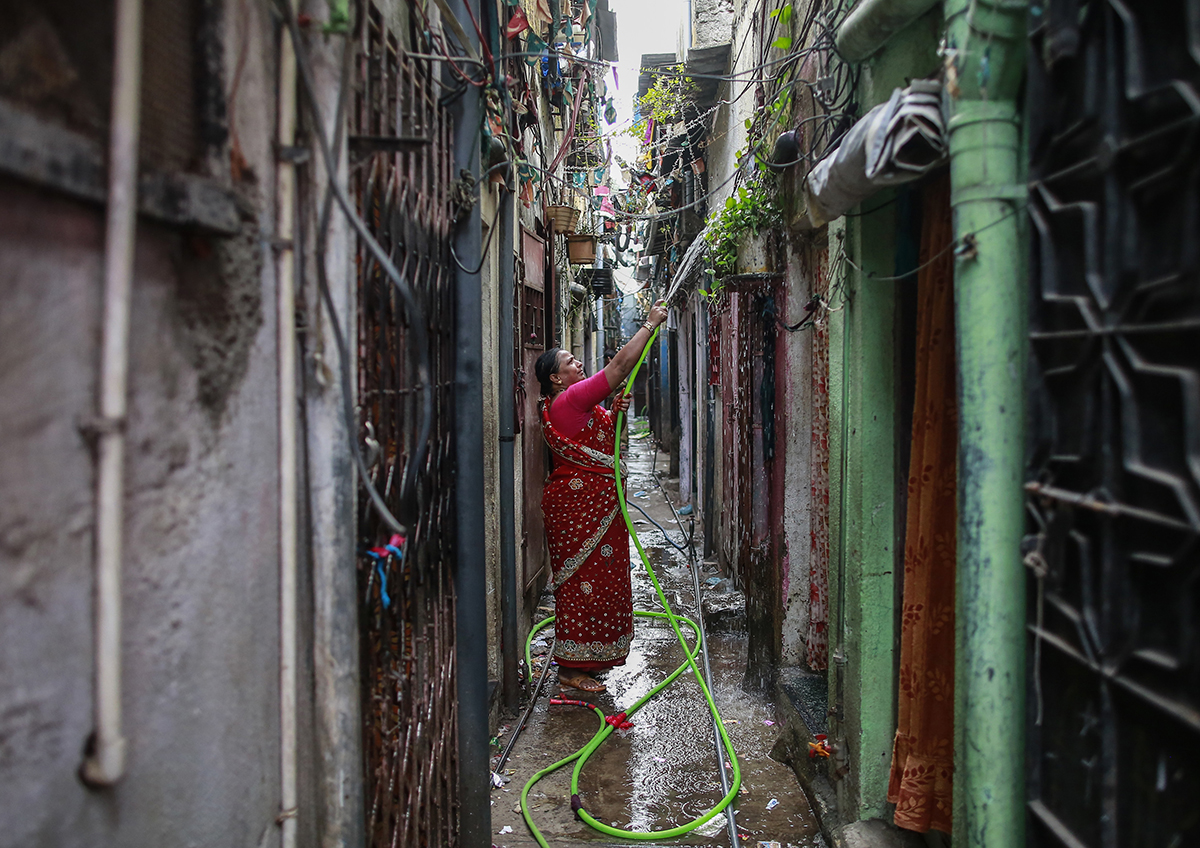
Slow journalists frequently linger, as did Katherine Boo who spent years in Mumbai reporting for her book “Behind the Beautiful Forevers”
Released quarterly as a highly stylized print magazine, each issue revisits the news of the last three months, sifting through the headlines to identify the important stories and report them with more depth and context. A recent issue included a story covering the mining disaster in the Turkish town of Soma that killed more than 300 people and briefly dominated news in May 2014. “It was a horrible tragedy, and it got blanket coverage,” says Orchard. “All the news organizations sent their crews in and they stayed for a few days, and then the agenda moves on, as it always does. But the story hadn’t ended.” While the spotlight was on the town, says Orchard, politicians grieved with families and made promises of giving money to survivors and reforming the mining industry. Three months later, however, all the promises had evaporated. The resulting story detailed a community seething with shock and anger and struggling to put itself back together. “When you return to events after the dust has settled,” says Orchard, “what you often find is a completely different story.”
Orchard doesn’t see the magazine competing with “fast” news so much as augmenting it. “All of us are news junkies as much as everyone else,” he says. “We are all constantly checking our phones. What the magazine addresses is a desire for something a bit more considered and nourishing.”
Since 2008, when the economic crisis further squeezed journalism, those in search of that kind of nourishment have increasingly moved online, with a new cadre of narrative websites—The Atavist Magazine, Narratively, Longform—challenging the conventional wisdom that Web surfers are only interested in reading bite-sized chunks. In fact, according to analytics firm Chartbeat, while more than half of readers spend less than 15 seconds on a Web page, those who do stay are staying longer—and those staying longer are more likely to return. Chartbeat recently changed its metrics to emphasize “engaged time” on pages rather than pageviews or unique visitors as a more accurate measure of quality. Amazon’s Kindle Direct Publishing platform is deploying attention metrics, too. Its subscription program now pays independent authors by the number of pages read rather than how often a book has been borrowed. All this reader engagement matters because, according to Chartbeat, readers are 20-30 percent more likely to remember an ad if they spend at least 20 seconds on a page.
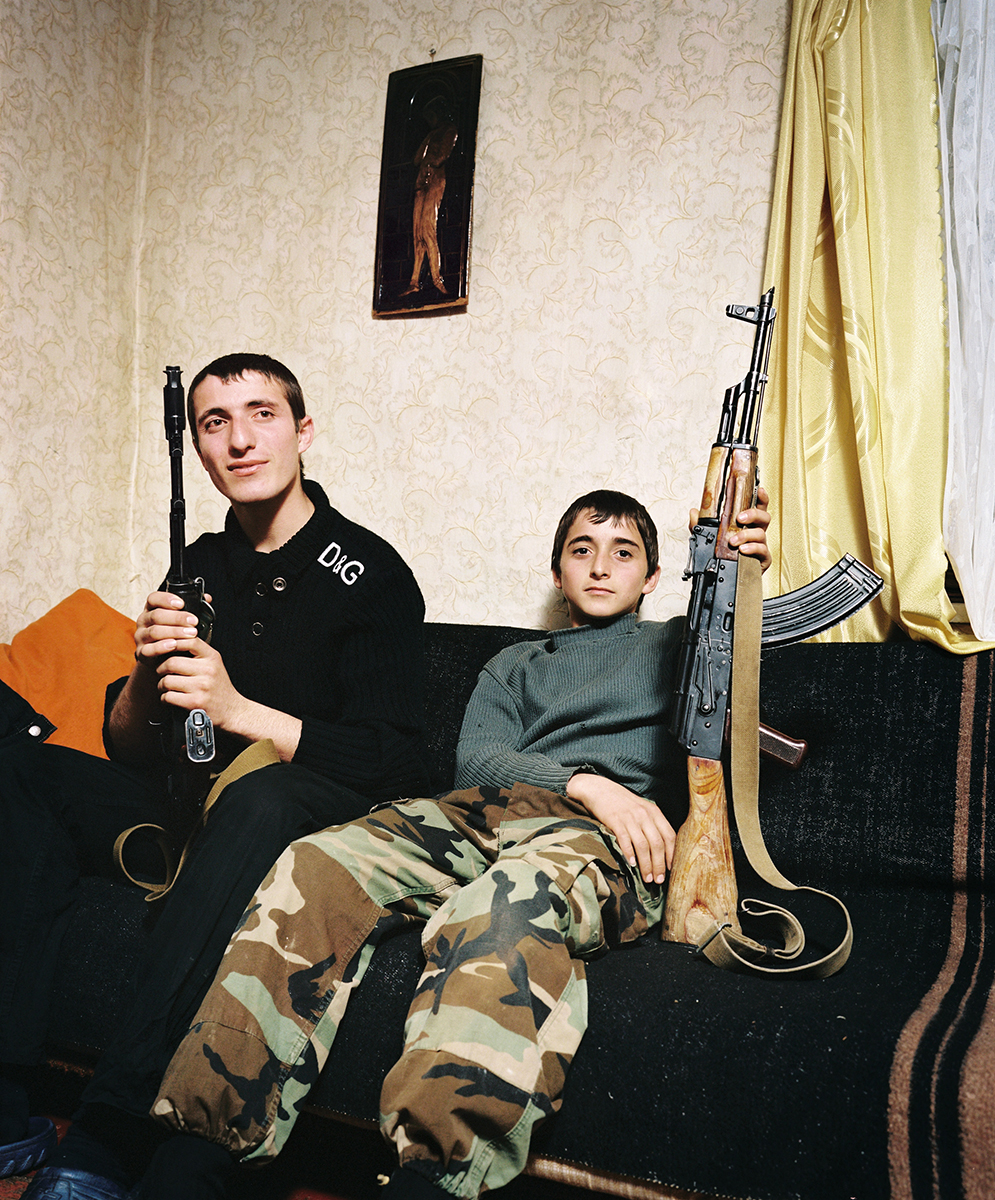
Two brothers living in a disputed region of Georgia pose with Kalashnikovs for The Sochi Project
The time van Bruggen and Hornstra spent there gave them unique access to stories in the region. Through interviews at wrestling schools in the North Caucasus, for example, they gained an introduction to a family in Dagestan with ties to rebels fighting in the mountains, affording a rare opportunity to tell the human story behind the continuing Islamic insurgency in the region. By the time the Games began in 2014, The Sochi Project had caught the attention of journalists from around the world, who turned to van Bruggen and Hornstra for context on the region. “The way Sochi was organized, people experienced it as a sort of suburb of Moscow,” says van Bruggen. “I think we changed the narrative and showed how Sochi was in the middle of this very volatile region.”
In addition to providing greater depth, forays into slow journalism are often typified by greater transparency in the reporting process. In “Serial,” Koenig opened up her methodology to an unprecedented degree, airing her doubts and changing her mind from episode to episode. “There was a lot of context to everybody’s point of view,” says Snyder. “In order to really understand what we were trying to say and draw meaning for it, we needed time. We needed the listeners to be just as inside the story and understand it on as granular a level as we did.”
Koenig’s on-air vacillations have been criticized by some reviewers and even lampooned on “Funny or Die” and “Saturday Night Live,” but Snyder defends them: “I feel like we made the right choices. Anybody looking at the case would have come to moments that were similar. I have a lot of uncertainty, and it seemed important to be honest about that, and not pretend that we knew everything.” Mark Berkey-Gerard, an associate professor of journalism at Rowan University in New Jersey, agrees: “What people really liked about it was seeing the process in motion and going through all of the things a reporter goes through to get the truth. And also seeing that even if you put hundreds of hours into a piece, you may never get the truth.”
Transparency brings its own challenges. According to Snyder, the very public nature of listener engagement with “Serial”—some of it reckless speculation—affected story selection and promises of anonymity for seasons two and three, which are in back-to-back production, with season two airing this fall. Another struggle for reporters of the genre is more basic: How to support themselves while they do the difficult, time-consuming work of pursuing a story.
Along with nine other writers, McKenzie Funk, author of “Windfall: The Booming Business of Global Warming,” about the race for profits in the Arctic, formed Deca (the Greek prefix for “10”), a collaborative through which members help each other produce and disseminate narrative work. After raising $32,000 on Kickstarter last year, the group committed to paying half of members’ expenses, up to $2,500, as well as providing fact-checking and cover design support toward the publication of stories as Amazon Kindle Single e-books. For each project, another Deca member serves as editor, with 70 percent of profits going to the writer, 5 percent to the editor, and 25 percent back to the collective.
Funk’s contribution, “Of Ice and Men,” (since republished as “The Wreck of the Kulluk“) grew out of an article he originally pitched to The New York Times Magazine about a looming confrontation between Royal Dutch Shell and Greenpeace in 2012. When Shell never appeared in the Arctic that year, the magazine killed the piece. Funk kept with the story, discovering that the reason for Shell’s disappearance was the crash of a massive oil rig, which he investigated for the next year and a half to create an in-depth piece on Shell’s safety practices.
Ironically, before Funk published the Amazon Single, he sold an excerpt of the e-book to The New York Times Magazine. That never would have happened had he not had Deca’s financial and emotional support. “It was languishing, to be honest. I didn’t know what to do with it,” says Funk. “Knowing I had a place to publish it kept me going.” Despite that success, however, Funk admits he’s been disappointed with revenues earned from Amazon. “The money from The New York Times Magazine is the most money that’s come from it by far,” he says.
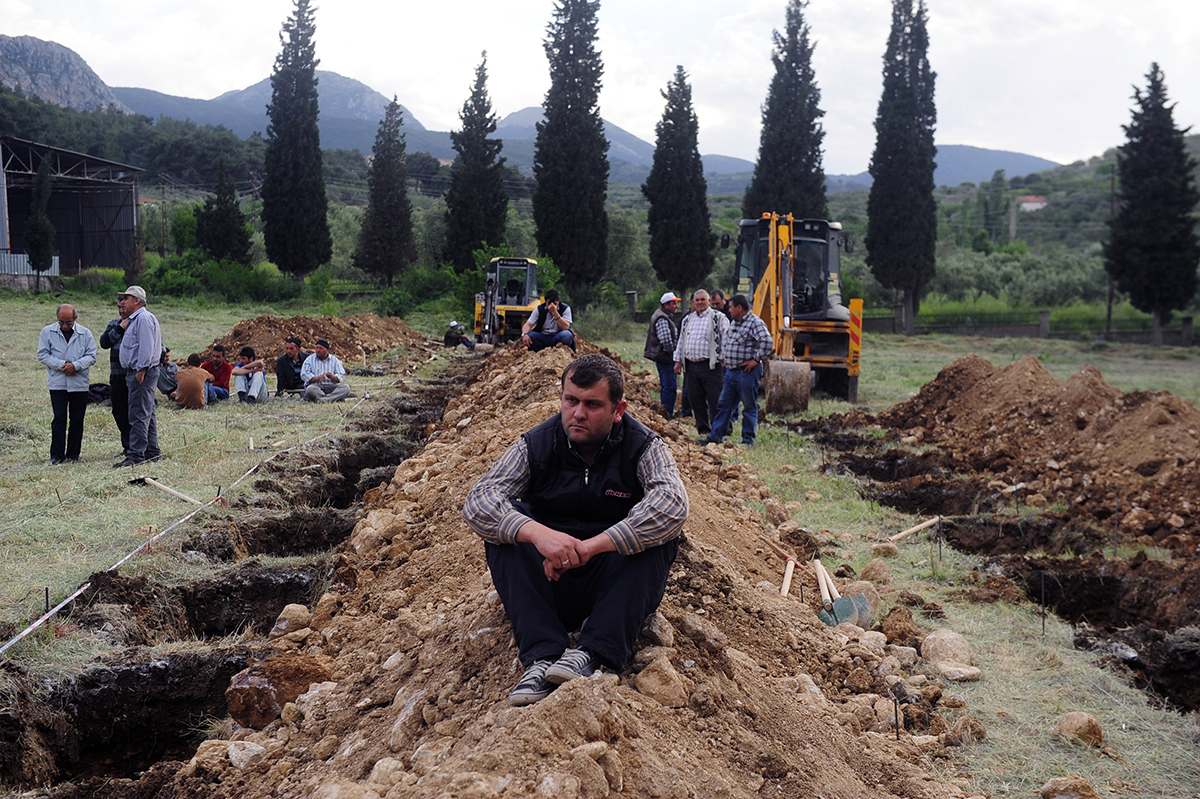
The slow journalism magazine Delayed Gratification examines stories, such as a mining disaster last year in Turkey, after most media have departed and the story has slipped from the daily news cycle
Amazon doesn’t release the amounts writers have earned from selling Kindle Singles, but editor David Blum notes that writers keep 70 percent of profits from sales and retain all rights to the work. Sometimes Amazon pays expenses “in the four-figures,” according to Blum, for reporting, as it did for a recent Single on the Costa Concordia cruise ship disaster. Authors retain full profits from any movie deals, as author Stephan Talty, who co-wrote “A Captain’s Duty” about the capture of Captain Richard Phillips by Somali pirates, recently did with a Kindle Single called “Operation Cowboy.” “It’s never an easy path to making a living as a writer,” says Blum, “but people have felt that Kindle Singles have helped them in making a living and giving them a creative outlet they wouldn’t have anywhere else.”
Most slow journalism efforts so far have been supported by grants or crowdfunding
Delayed Gratification has survived for four years by charging $57 a year for subscriptions. Still, editor Rob Orchard laments that he is only able to pay writers 32 cents per word, compared to typical word rates in the U.K. of 50 to 65 cents per word. Likewise, Narratively’s founder and editor in chief, Noah Rosenberg, says the site only pays “a few hundred bucks” per story. That’s hard to stomach for writers used to rates of $1 to $3 per word for national magazines. Recently, the site has begun hiring writers to produce branded content for clients including Chevrolet, General Electric, and SundanceTV. While such a practice may raise eyebrows about the separation of editorial from advertising, Rosenberg says such measures are necessary to subsidize creative journalism, adding that the site is vigilant about conflicts of interest.
One publication that seems to have cracked the code on making slow journalism sustainable is The Atavist Magazine, which publishes long-form narrative articles of 10,000 to 20,000 words. Started back in 2011, the site from the beginning vowed to compensate writers at the level of major print publications. “When we first started, we paid writers thousands of dollars out of our bank accounts,” says CEO and editor Evan Ratliff. Since then, the company has received more than $4 million from investors, including Barry Diller and Andreessen Horowitz. What allows the company to succeed is a publishing platform separate from the magazine that individual subscribers use to publish their own content, which drives revenue for the company as a whole. For each article, Atavist pays a fee and then splits any revenue from subscriptions, single-copy sales, and television and film rights. “On average, writers make north of 10 grand on a story,” says Ratliff.
For every slow journalism publication that survives, another goes by the wayside. Back in 2010, LA Weekly editors Joe Donnelly and Laurie Ochoa founded Slake, a handsome print publication featuring long-form journalism focusing on Los Angeles as a crossroad of cultures in the 21st century. “Every piece of the journal was put together with the utmost attention to detail,” says Donnelly. “That’s where it all falls down to a certain degree, because this painstaking process was very expensive.” At its height, the journal had 500 subscribers at $60 each, and issues hit the Los Angeles Times bestseller list 14 times. But the publication ran out of money after two years.
Donnelly was next hired to edit an online publication called Mission & State that featured a mix stories around the Santa Barbara region, funded by a two-year grant from the Knight Foundation. The publication failed to develop a business model that could keep it afloat, however, and shuttered after only a year and a half. “We have to be willing as consumers to support this stuff, and how do you get the genie back in the bottle now that we are conditioned not to pay for anything?” Donnelly says.
The question of sustainability is one that has also bedeviled the slow food movement, which has developed models such as community-supported agriculture in order to support local farmers. Residents, often in an urban area near a farm, purchase shares at the beginning of the growing season, allowing the farmer to obtain needed seeds and equipment, in exchange for weekly or biweekly deliveries of produce at harvest time. Some outlets have experimented with community-supported journalism. One successful publication is Belt Magazine, which started in Cleveland and has since expanded to a handful of other Rust Belt cities. Rather than subscriptions, Belt is funded by “memberships” that range from $20 per year to $1,000 and include copies of the magazine as well as swag like T-shirts and a membership card that offers discounts on local events and products.
However it’s funded, as with local and organic foods, much of the success of slow journalism has come from consumers willing to pay a premium for it. “We happily do that because we take responsibility for health and the environment,” says Le Masurier. “In the same way, consumers need to take responsibility for journalism.”


